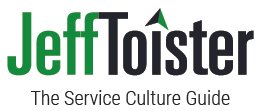Advertising disclosure: This blog participates in the Amazon Services LLC Associates Program, an affiliate advertising program designed to provide a means to earn fees by linking to Amazon and affiliated sites.
We've all experienced an outrageous customer.
Perhaps they lied or exaggerated. They might have been unreasonably angry. Others make a mistake and then blame you for the problem. Some are too obstinate to cooperate as you try to help them.
It's natural to be dismissive. Why should you have to serve someone who lies, throws a tantrum, blames you, and then refuses to be part of the solution?
Erica Mancuso has a counterintuitive suggestion. When customers are outrageous, we should give them the benefit of the doubt.
Mancuso is one of ICMI's top 50 thought leaders to follow on Twitter, and the Director of Offer Management at nThrive. We recently had a conversation about the importance of giving customers the benefit of the doubt.
Here are a few of the questions that Mancuso answered:
What does it mean to assume good intent?
Are there things that make it more difficult?
How do you get a customer to be more rational?
How do you get out of the mindset that customers are just being jerks?
Why is it important to assume a customer has good intentions?
You can watch the full interview or read the highlights below.
What does it mean to assume good intent?
"Most people when they go to work everyday, they're not trying to complain about everything," said Mancuso. "They're trying to get a job done."
She explained that customers contact customer service because they're frustrated about a problem. Their primary goal is to get the problem resolved and to feel better about it.
Mancuso shared that it's natural for customers to exaggerate when they're upset. "Sure, will they embellish things a little bit? Maybe. Haven't we all done that as customers at some point in time? We do."
Assuming good intent requires us to look beyond the customer's outrageous behavior and realize what's behind it.
"The client has good intentions," said Mancuso. "They're not trying to wreck my day. They just want the issue resolved."
See more at the :29 in the interview.
Are there things that make it more difficult to assume good intent?
Situations where a customer appears to be lying or obviously exaggerating can be especially difficult.
In my book, Getting Service Right, I shared a story about Paul, a night club manager who took a call from an unreasonable customer. The customer's credit card company had issued a fraud alert, and the customer angrily accused one of Paul's employees of stealing the card number. Paul knew this wasn't true, and he struggled with his instinctive reaction to dismiss the customer's concerns.
Mancuso described this as a common challenge. "We all tend to embellish things when we're frustrated."
It can be tempting to catch a customer in a lie, or point out how they're wrong. However, that tactic usually makes things worse, not better.
Go to 3:31 in the interview to hear more.
How do you bring a customer back to a more rational place?
Mancuso recommends asking specific questions to redirect the conversation.
For example, if a customer tells you something "never works" ask them specifically how many times the error occurred and what they were doing when they noticed it.
The key is to partner with the customer to gather facts and avoid accusing them of anything. "You do it in an empathetic way," said Mancuso. "You don't want the person on the other end to feel like an idiot."
Using specific questions echos similar advice contact center expert, Myra Golden, shared with me in our interview. Golden suggests starting with three closed-ended questions such as "Are you using a Mac or a PC?" to help the customer regain a more rational mindset.
Hear more on this topic at 5:02.
How do you get out of the mindset that customers are just being jerks?
Mancuso suggests that customer service professionals be willing to learn from their experiences. It's important to reflect on situations where a customer is exaggerating and think about better ways to handle them.
"Let's not shy away from these difficult conversations," said Mancuso. "They're going to help you grow as a professional."
One of the biggest obstacles is taking it personally when a customer directs their anger towards you. "You have to understand they're not angry at you, they're angry at the situation."
Not taking it personally can be easier said than done. Outrageous customers often trigger our fight or flight instinct, which is our natural urge to either argue with the customer or get away from them.
Go to the 8:12 mark to hear more.
Why is it important to assume a customer's intentions are good?
"You tend to be more empathetic when you assume good intent," said Mancuso. Empathy is a core customer service skill used to help customers feel better.
Mancuso explained that feelings are a powerful part of the customer experience. "We know that their overall experience with a company is one third what happens and two thirds how you make them feel."
Assuming good intentions often helps you wade through the customer's exaggerations and understand what's really bothering them. It's the mark of a true professional when you can regulate your own emotions and find a way to help the customer feel great at the end of the conversation.
Hear more at 11:23 in the interview.
Additional Resources
Mancuso shared some additional tips for serving upset customers in this article published by ICMI.
You can get even more ideas from my LinkedIn Learning course, Working with Upset Customers. You'll need a LinkedIn Learning subscription to view the entire program, but a 30-day trial is available.













